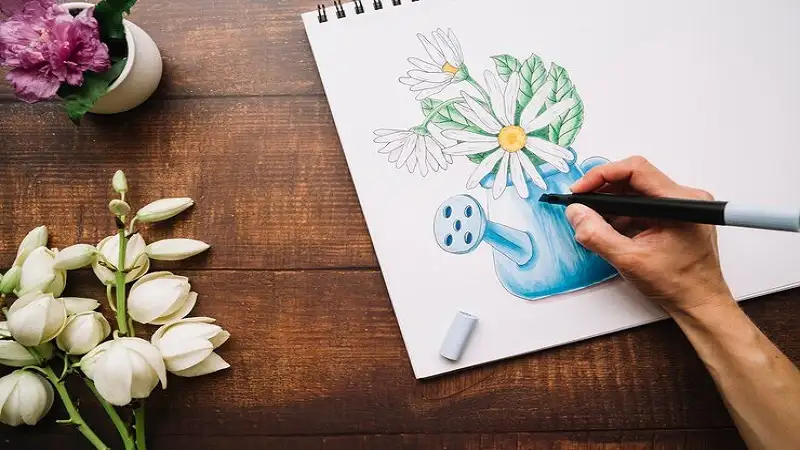Easy:h6cmv-l-cgu= Drawing is one of the most fundamental artistic skills that anyone can learn. Whether you’re a complete beginner or looking to refine your existing skills, understanding easy drawing techniques is a great way to get started. Drawing isn’t just about creating art; it’s about expressing yourself and unleashing your creativity. In this guide, we’ll explore various methods to make drawing simpler and more enjoyable for everyone.
What is Easy Drawing?
Definition and Concept of Easy Drawing
Easy:h6cmv-l-cgu= Drawing refers to the practice of creating simple illustrations using basic techniques that anyone can master. It’s not about creating a masterpiece on your first try but building confidence through straightforward steps that lead to artistic growth.
Benefits of Practicing Simple Drawing Techniques
Starting with Easy:h6cmv-l-cgu= Drawing techniques helps you develop a solid foundation. These techniques improve hand-eye coordination, boost creativity, and reduce stress. Plus, they’re a great way to express yourself without the pressure of achieving perfection.
Basic Drawing Supplies You Need
Essential Tools for Beginners
Before you start drawing, it’s crucial to gather the right supplies. Here are some essentials:
- Pencils: HB, 2B, and 4B for various shading and sketching.
- Erasers: Kneaded and vinyl erasers for correction.
- Paper: Sketchpads with a smooth surface.
- Sharpener: A high-quality sharpener to maintain pencil points.
Recommended Brands and Where to Buy Them
For beginners, brands like Staedtler, Faber-Castell, and Prismacolor are great choices. You can find these supplies at local art stores or online retailers like Amazon and Blick Art Materials.
Understanding Basic Drawing Techniques
Sketching Basics
Light Lines and Pressure Control
Learning to control your pencil pressure is essential. Start with light lines to sketch the basic shape of your subject. This allows for easy corrections and helps in maintaining proportions.
Shading Techniques
Shading adds depth to your Easy:h6cmv-l-cgu= Drawing and brings your sketches to life. Practice shading by changing the pressure on your pencil to create different tones. Experiment with techniques like hatching, cross-hatching, and stippling.
Contour Drawing
What is Contour Drawing?
Contour Easy:h6cmv-l-cgu= Drawing focuses on capturing the outline of your subject without lifting your pencil. It’s a great way to train your eye to see details and improve your drawing accuracy.
Step-by-Step Contour Drawing Exercise
- Pick a simple object like a leaf or a hand.
- Without looking at your paper, try to draw its outline.
- Focus only on the object’s edges and details.
- Compare your drawing to the actual object and note areas for improvement.
Easy Drawing Ideas for Beginners
Simple Shapes and Patterns
Start by practicing basic shapes like circles, squares, and triangles. These forms are the building blocks for more complex drawings.
Drawing Everyday Objects
Once you’re comfortable with shapes, move on to drawing everyday objects like cups, fruits, or flowers. Break down these objects into their simplest shapes and build up from there.
How to Draw Animals Easily
Animals can be challenging, but breaking them into simple shapes makes the process easier. For example, draw a cat using circles for the head and body, with triangles for the ears.
How to Improve Your Drawing Skills
Practice Techniques for Beginners
Consistency is key to improving your Easy:h6cmv-l-cgu= Drawing skills. Set aside time each day to practice, even if it’s just for 10-15 minutes. Try different techniques and styles to broaden your abilities.
Common Mistakes to Avoid
Avoid pressing too hard on your pencil during the initial sketch. This can make it difficult to erase lines and adjust your drawing. Also, don’t rush the process; take your time to observe and draw accurately.
Getting Inspired by Other Artists
Looking at the work of other artists can spark your creativity and help you learn new techniques. Platforms like Pinterest and Instagram are great places to find drawing inspiration.
Digital Drawing: An Easy Transition
Tools for Digital Drawing
If you’re interested in digital art, there are plenty of tools to get you started. A drawing tablet and stylus are essential for creating digital artwork.
Recommended Drawing Apps
Some of the best apps for beginners include Procreate (iOS), Autodesk SketchBook, and Krita (Windows/Mac). These tools offer a range of brushes and layers to make drawing easier.
Tips for Transitioning from Paper to Digital
Switching to digital drawing might seem daunting, but it’s quite intuitive once you get the hang of it. Start by replicating your paper sketches on a digital platform to get comfortable with the tools.
Creating a Daily Drawing Routine
Importance of Consistency in Drawing
Developing a daily drawing routine helps build muscle memory and improves your technique over time. Consistency is the key to mastering any skill, including drawing.
How to Set Up a Drawing Schedule
Set achievable goals like drawing for 15 minutes a day. Create a checklist of what you want to practice, such as shapes, shading, or specific objects.
Advanced Tips for Refining Your Skills
Learning Proportions and Perspectives
Understanding proportions is crucial for realistic drawings. Practice drawing grids and use them to maintain the correct size and placement of objects in your artwork.
Understanding the Basics of Human Anatomy
Studying human anatomy helps in drawing lifelike characters. Focus on learning the structure of the body, including the muscles and bones.
Drawing Realistic Landscapes
Landscapes require attention to detail and an understanding of perspective. Practice drawing different elements like trees, mountains, and water bodies to add realism to your scenes.
Conclusion
Easy:h6cmv-l-cgu= Drawing techniques provide a great starting point for anyone looking to learn or improve their drawing skills. With the right tools, consistent practice, and a bit of patience, you can progress from simple sketches to more detailed artwork. Keep practicing, stay inspired, and enjoy the creative process!
